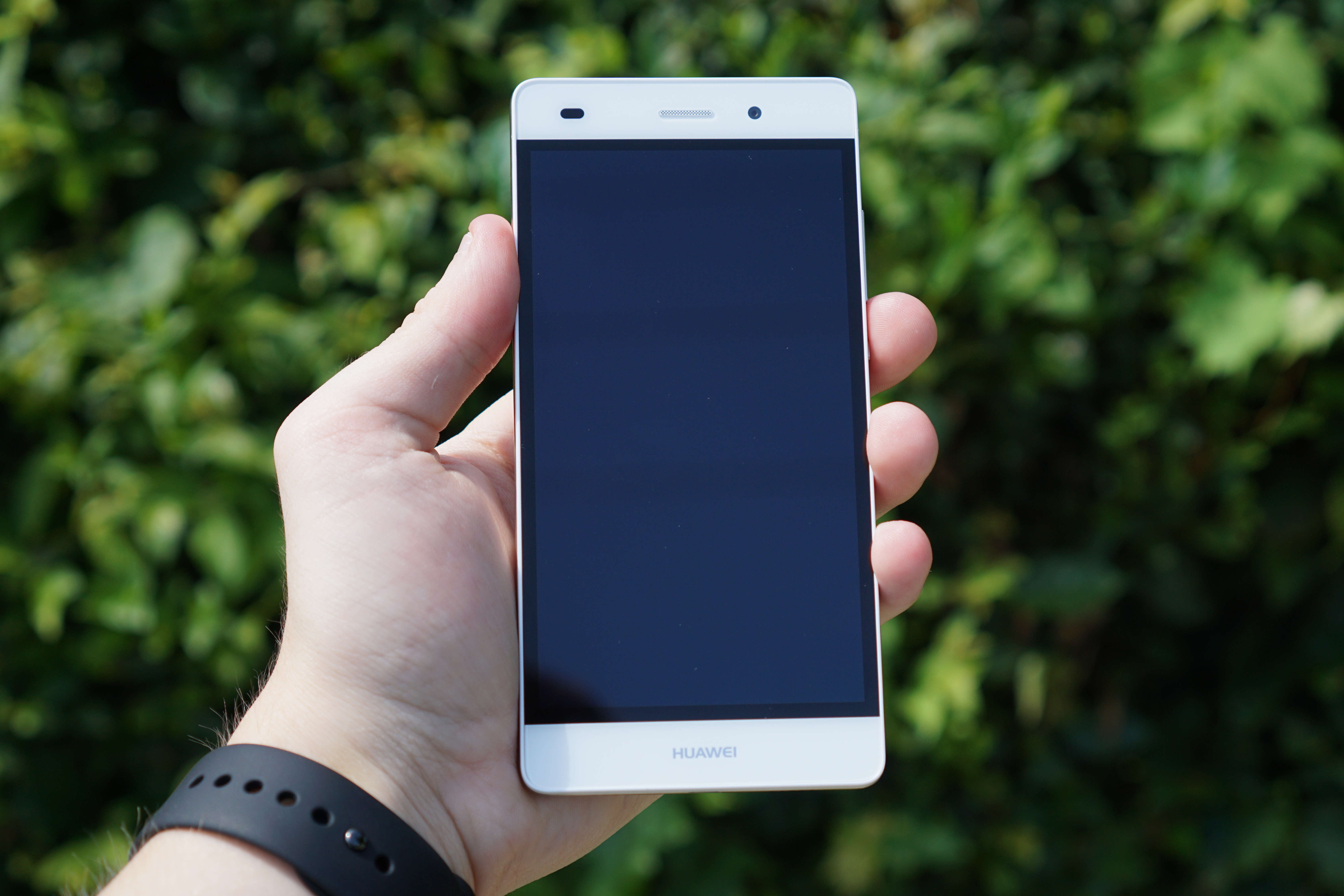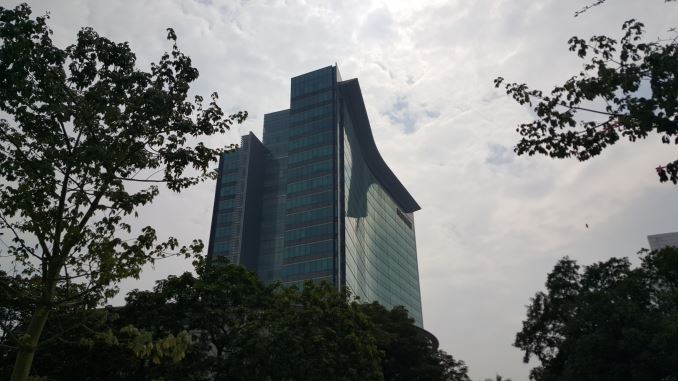China Calling: Huawei’s Media Tour, Kirin 950 and Why We Went
by Ian Cutress on December 4, 2015 8:00 AM EST
Sometimes the only way to develop a relationship with a technology manufacturer beyond a simple press release exchange with a media relations team, and the odd limited-time product review sample, is to meet the people responsible for designing, managing and marketing the products. Over the past two decades (almost), AnandTech has done this with numerous companies in the East and the West to great effect, to the point where our CES and Computex schedules are effectively packed to meet up with manufacturers we work closely with to update each other on perspectives in the industry as well as progress being made internally and externally. This November, we were given the chance to visit two of Huawei’s facilities and speak to a number of important individuals at both Huawei and HiSilicon.
Huawei, A Perspective
If you’ve followed AnandTech’s smartphone coverage of late, you might recall we attended the launch of Huawei’s P8 and P8 Max handsets, with Andrei reviewing the Mate S, the P8, the Mate 7, the Honor 6 and we’ve also covered devices like the Mate 2 briefly in the past before Huawei’s push to more western-style markets and devices.
For lack of a better phrase, others have said that ‘If Xiaomi is China’s version of Apple, then Huawei is China’s version of Samsung’, and if we go by sales figures, Huawei is now regularly competing (depending on which metric you use) alongside Xiaomi, Apple and Samsung to be the biggest smartphone provider in China in terms of shipments and market share. Huawei has devices, they have the clout to mass-produce almost on demand, but they are having issues expanding outside of their main consumer base, which is part of the reason why these media tours are taking place. Having read through the trips of several previous journalists, it was slightly amusing to hear that a common factor brought up in discussions is that the name Huawei seems to be difficult for westerners to pronounce if they’ve never heard it before (for clarification, try hwa-way or hugh-er-way). Interestingly, Huawei doesn’t see that as much of a barrier. I could certainly imagine members of my family seeing the name ‘Huawei’ and not having an idea how to pronounce it.
Nevertheless, Huawei’s circumstances in the global market has been one reason why we have wanted to get into deeper contact, especially as one of Huawei’s key technology assets is its custom silicon design capability for its SoCs. From their subsidiary company HiSilicon, whose roots can be traced back to the 90's, they produce chipsets designated ‘Kirin’, which implement ARM microarchitecture designs with other IP elements to form their own SoC, rather than relying on third-party designs such as from Mediatek, Qualcomm or Samsung. As part of our tour, we were present at the official media briefing (translated real-time from Chinese) for HiSilicon’s latest chipset, the Kirin 950. As mentioned in our announcement piece, this chipset is built on TSMC’s 16nm FinFET+ process and features quad A72 and quad A53 ARM processors as well as a new custom image signaling processor, Cat 6 LTE modem and dual memory controller support.
On the subject of SoC design, from the outside at least, if we were to consider Mediatek and Samsung both ‘Tier-1’ implementers of ARM’s microarchitecture designs, as opposed to Apple and Qualcomm who take the ISA and do their own µarch designs, then from the outside HiSilicon's Kirin lineup seems to be eying the former development. I prefixed that last sentence with ‘from the outside’ because that distinction is important – HiSilicon has been closed to any in-depth discussion of the design, and the devices we have tested so far do not necessarily produce anything new into the ecosystem. Either we are missing a trick in understanding the design from the top-down, or not understanding the design philosophy behind why Kirin exists as opposed to an off-the-shelf Mediatek or Qualcomm comparison. As further explained in part of our media tour, we spoke to a number of individuals at HiSilicon for the purpose of understanding their perspective, and hopefully educating ourselves and passing this information on to our readers.
The Purpose Of This Piece
To augment the more professional analysis we usually do at AnandTech, this piece is more of an overview of the Huawei media tour combined with a look into corporate strategy, how Huawei sees itself, and where the difficulties might lie in their goals. This piece is written in a more colloquial style than some of our other write-ups, but even if everything on this trip we saw was cherry picked (see the next page), there is still some value in breaking down a metaphorical company ‘black box’ where we have products coming out on one side and press releases/marketing on the other with some magic in-between. In the past we’ve done this with HQ visits to ASUS, ECS, MSI, Logitech and others, as well as a long series of interviews with Intel and ARM. The fact that this is a company based in China that isn’t called Foxconn suggests that even if all we see is ‘just another smartphone factory’(™), we can at least probe the corporate structure and find out what makes a company like Huawei tick, asking questions and generating a long-term dialogue between us.
Huawei’s main building, Shenzhen site












109 Comments
View All Comments
Communism - Monday, December 7, 2015 - link
Intercepting and identifying those who use TOR is easy, just make sure most of the useful exit nodes are yours and you automatically have all the plaintext transit.After that, you simply have to gain access to all the relevant certificate authorities to man in the middle intercept and decrypt any encrypted traffic by setting up a lookalike site to the one you are impersonating and then simply tell the cisco routers, google routers, microsoft routers, etc. to route the traffic to your site.
When all else fails you can just stuxnet to win. Issue yourself certificates with the microsoft certificate authority and push windows updates directly to their computer and RAT them.
If that fails, you can just push Intel and/or AMD microcode updates directly to their motherboards and run level 0 and level -1 codes with direct access to the UEFI/Trust Chip.
If that fails, you can just directly access their CPU on Ivy Bridge or higher though the on-chip random number generator entropy source that conveniently has a radio antenna (That's how the entropy source produces it's high quality random numbers).
I could go on, but I would guess you get the point.
Communism - Monday, December 7, 2015 - link
code* , not codesMurloc - Saturday, December 5, 2015 - link
even if it's true they wouldn't tell an american journalist anything about it, so it's not even worth asking.You're free to decide on your own whether you trust them or not.
Ryan Smith - Monday, December 7, 2015 - link
"I'm surprised and quite disappointed that you didn't bring up Huawei's (supposedly) close ties to the Chinese military-industrial complex and the PLA."Though it may be an interesting discussion, it's not one we're in an educated position to discuss. Nor really is it my desire for AT to be a political blog.
Meanwhile the comments are fine and I don't see a need to remove them right now. But keep in mind that this is a tech news website, and I'd like to keep the comments focused on tech.
Despoiler - Friday, December 4, 2015 - link
Huawei must not have been too image conscious when they stole and integrated Cisco IP into their products. They even kept lying about it even after they settled.http://blogs.cisco.com/news/huawei-and-ciscos-sour...
Communism - Saturday, December 5, 2015 - link
Why should anyone trust anything that proports to be "justice" that would side with "rounded corners" patents consistently?Where the sole determiner of right and wrong is how many kick-backs and general corruption is present in a tug of war kind of way between the two parties arguing a case in this "justice" framework?
Daniel Egger - Saturday, December 5, 2015 - link
So I guess what you're saying is that everyone got it wrong and Cisco blatantly copied a full operating system from Huawei? Interesting thought but highly unlikely given the fact that Huawei is a Chinese company and their products much younger than Ciscos...s.yu - Saturday, December 5, 2015 - link
It's not even interesting. That guy is highly questionable in his intents.Communism - Saturday, December 5, 2015 - link
Hi operation earnest voice.fanofanand - Friday, December 4, 2015 - link
I am curious to see the size of the back door on these devices, you know the Chinese Government requires it, what makes anyone think the devices sold globally would be any different? I get that the U.S. government, and probably several other governments are no different, but the Chinese government hasn't exactly have a strong record of acknowledging human rights....